Table of Contents
Rangoli is a classic custom practiced throughout India. Rangoli designs for Diwali are popular with families across the country. Rangoli is also known as Alpana, Aripoma, and Kolam. Rangolis are popular in families across the country. In many circumstances, drawing the Rangoli is a family custom and a time for bonding. In this Dewali season, explore several distinctive and Diwali rangoli easy designs for Competition with a Message with comprehensive instructions for preparing for school competitions and bringing a touch of elegance to your houses.
Diwali Rangoli Easy Design
What is Rangoli? The term “Rangoli” is claimed to be derived from the words “Rang” and “Aavalli,” which alludes to a row of colors. Rangoli designs and colors vary by region, but they all follow the same basic patterns. Rangolis are often geometrical in design.
- Natural components such as animals, flowers, and so on are frequently used in design patterns.
- Here is no limit to the size of a Rangoli. The majority of Rangolis are the size of a carpet placed in an entryway.
- These Rangolis are very popular among city dwellers who have little room. It is not uncommon to discover an entire courtyard filled with a colorfully decorated Rangoli in larger residences such as bungalows.
- Rangolis are always crafted by hand, with all designs carved out with the fingers. A line is typically drawn with a single finger, much like a pencil. A pattern may be drawn using dotted movements that are brought together at the end in some circumstances.
Scroll down the full page to get beautiful 35+ Diwali rangoli designs that are very to draw in less time.
Rangoli Design for Diwali 2024
Rangoli design for Diwali 2024 designs vary greatly, ranging from simple geometric patterns to intricate mythical scenarios. Rangoli is a combination of various rangoli designs that combine vibrant colors and a mix of traditional and contemporary motifs. This design stands out with its unique arrangement of elements and vivid color palette. We have included several samples of Rangoli decoration for your reference.

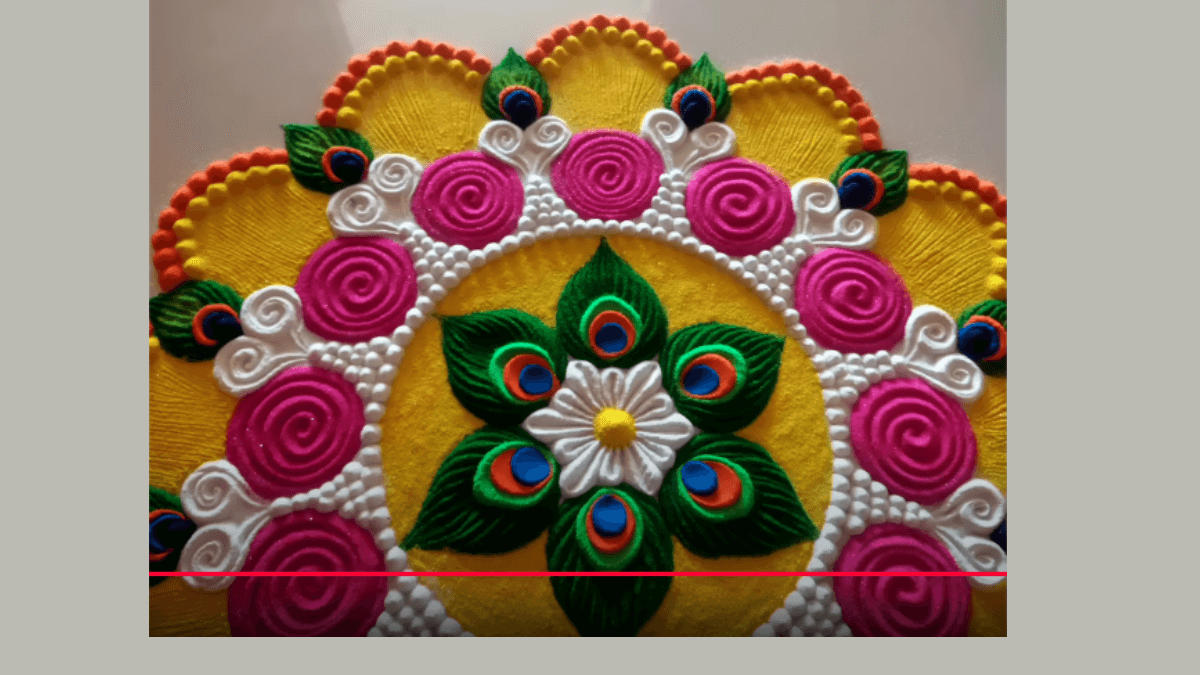
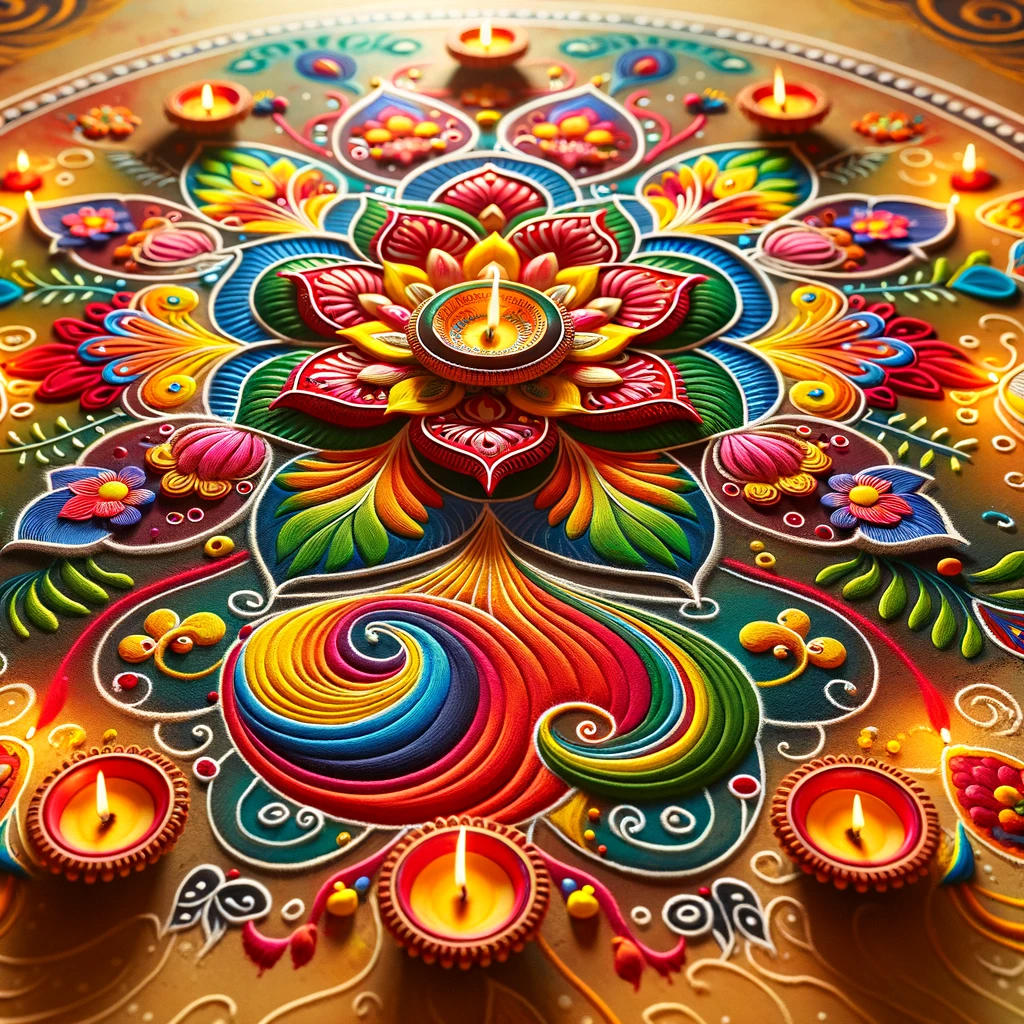
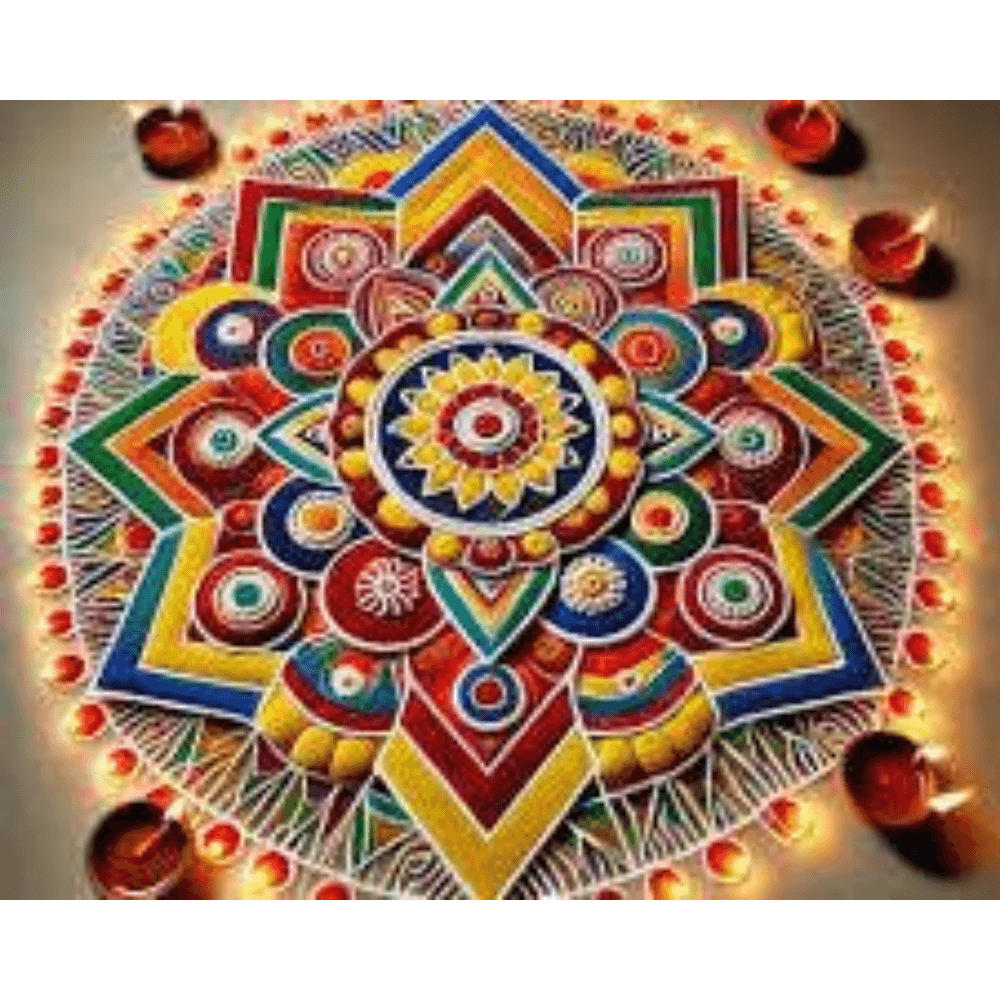
NOTE – These 3 hard rangoli designs are very challenging and time-consuming to make but you can customize the design.
Rangoli Design for Diwali Simple
Here is an image of a vibrant and colorful rangoli design for Diwali simple, featuring traditional Indian patterns and motifs, adorned with diyas and floral elements. This rangoli captures the festive spirit of Diwali.
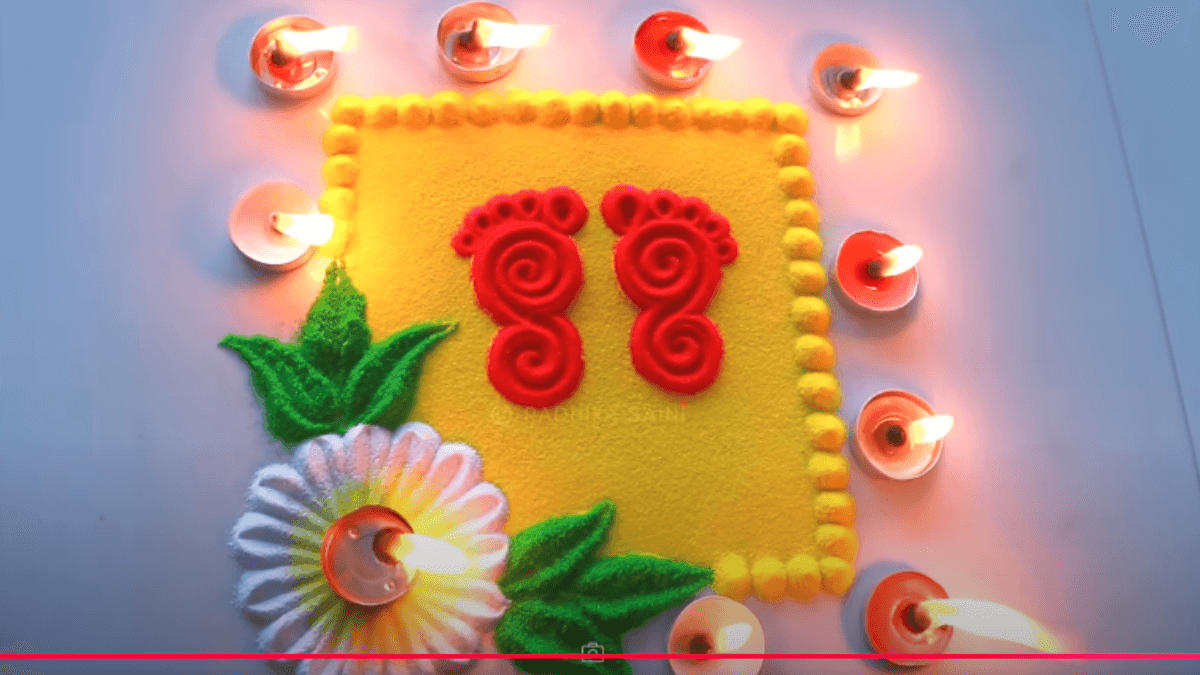


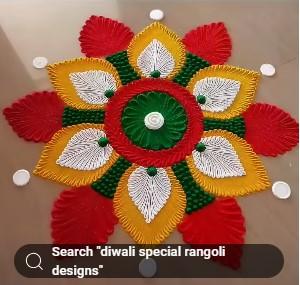
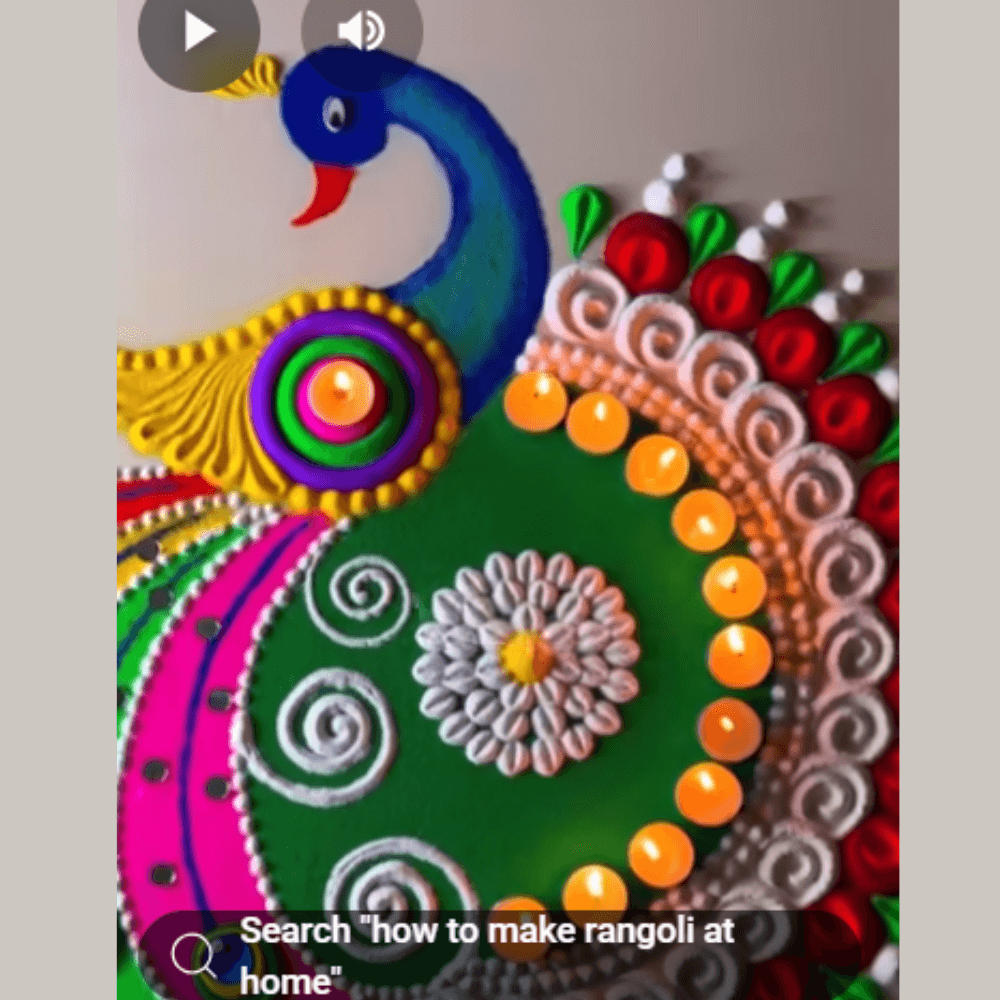
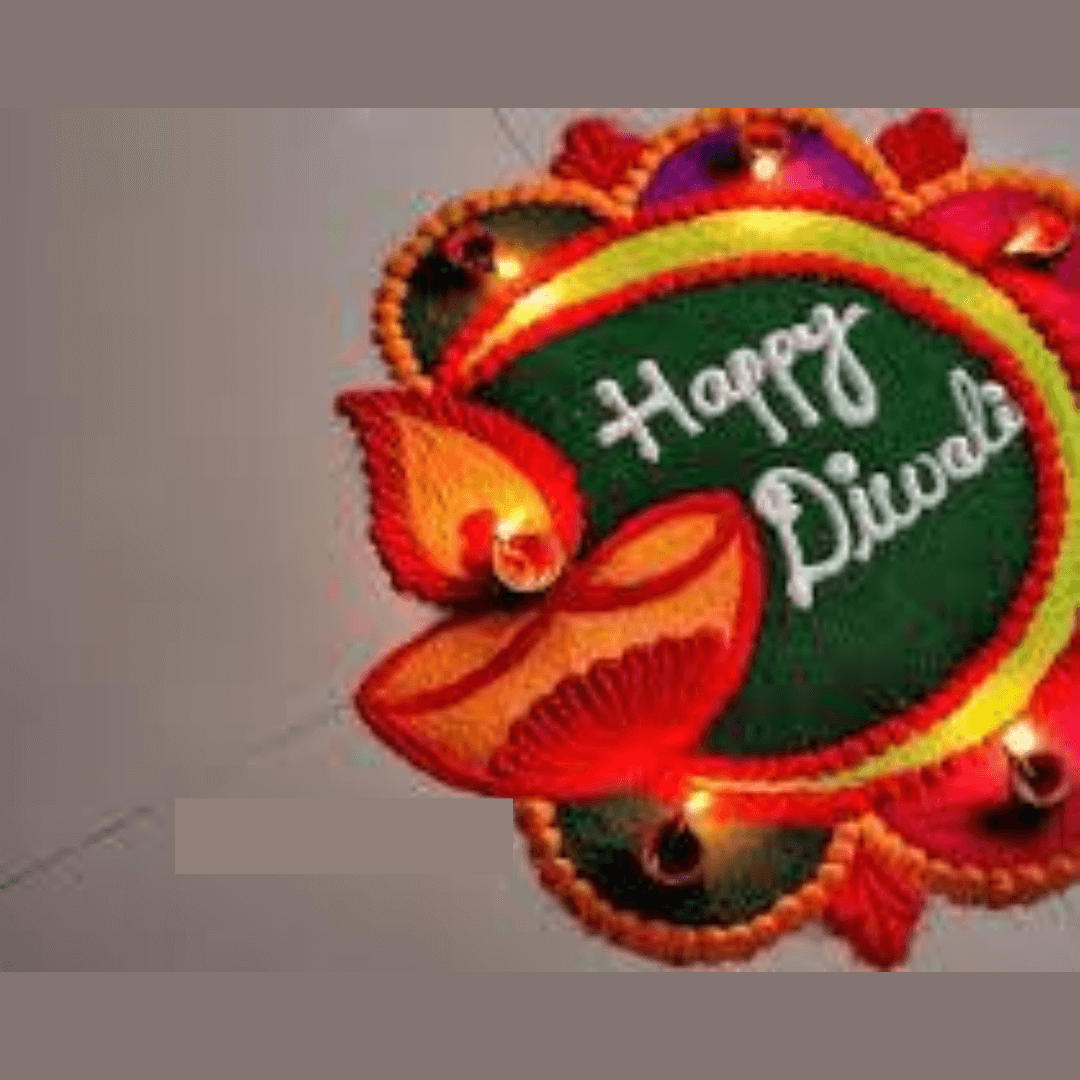
Rangoli Designs for Competition with Message
Rangoli designs for Competition with Message is the art of drawing to elaborate our social problems in this festival. These beautiful rangoli designs are very easy to make on the floor with materials such as rice, flour, or sand. These vivid designs are thought to bring good luck, success, and happiness into the home.
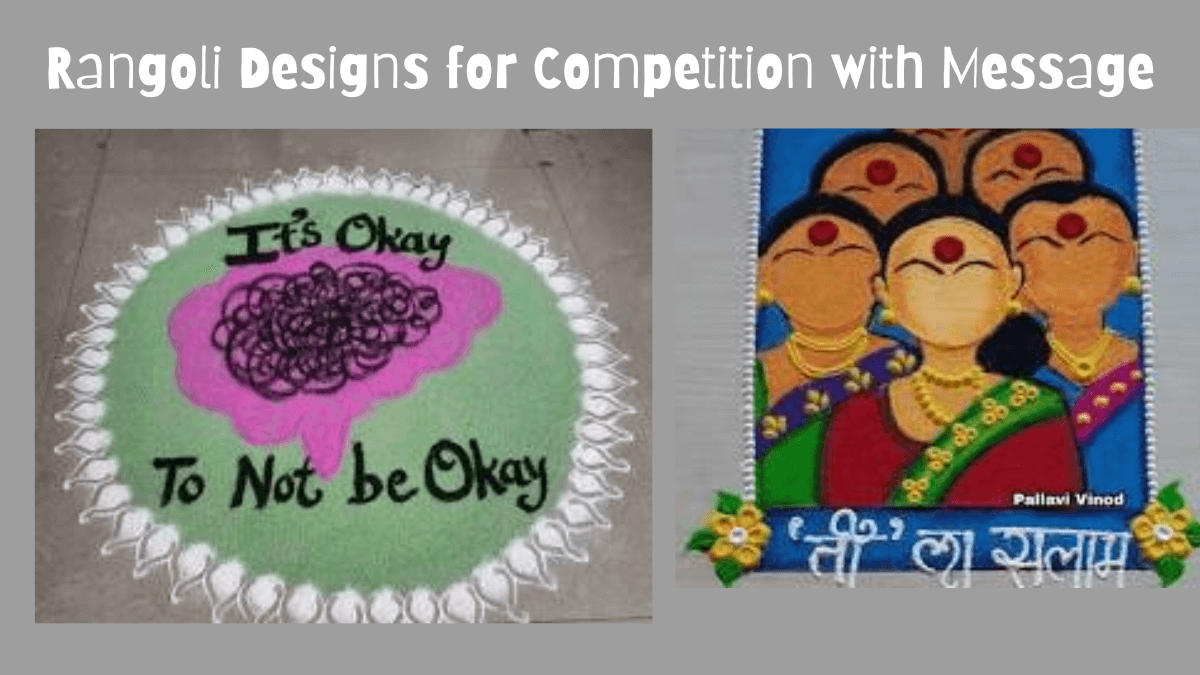
Rangoli Designs for Diwali Competition
These two rangoli designs for Diwali competition with social messages about saving trees and what our country has achieved in the last few years.
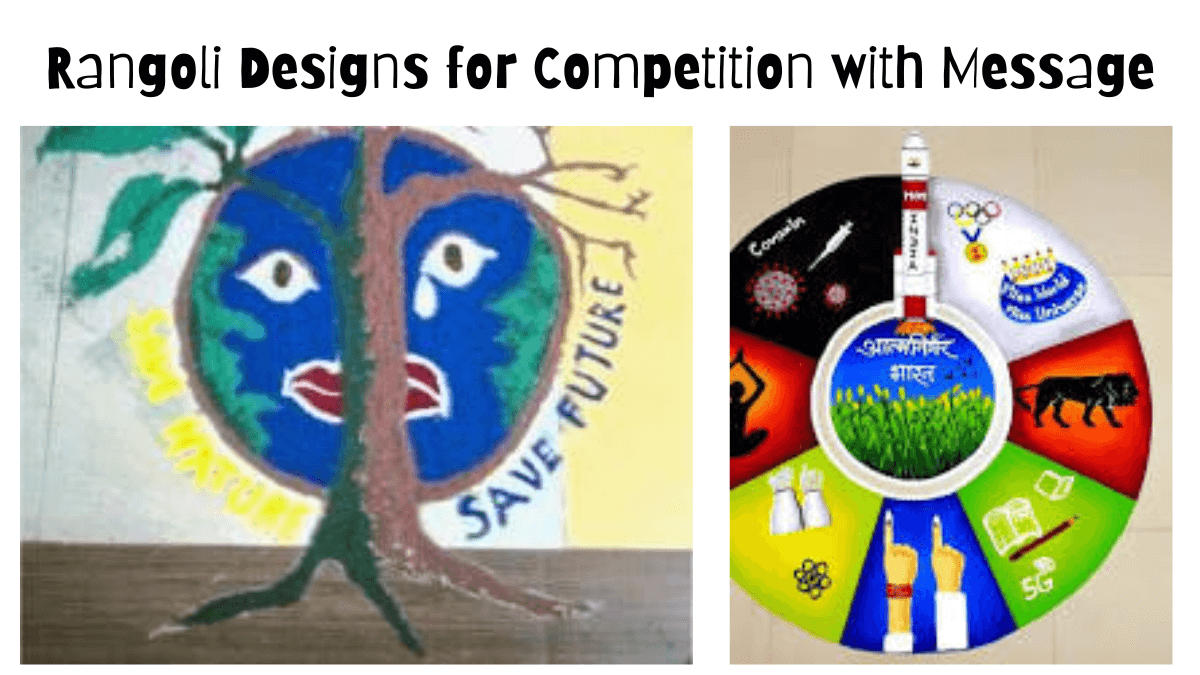
Best Rangoli Designs for Competition
On the occasion of Dewali, people arrange Rangoli Designs Competitions in many places. Here we have a few beautiful rangoli that you can use for any competition. These designs will look great in big yards and halls.
Hard Rangoli Design
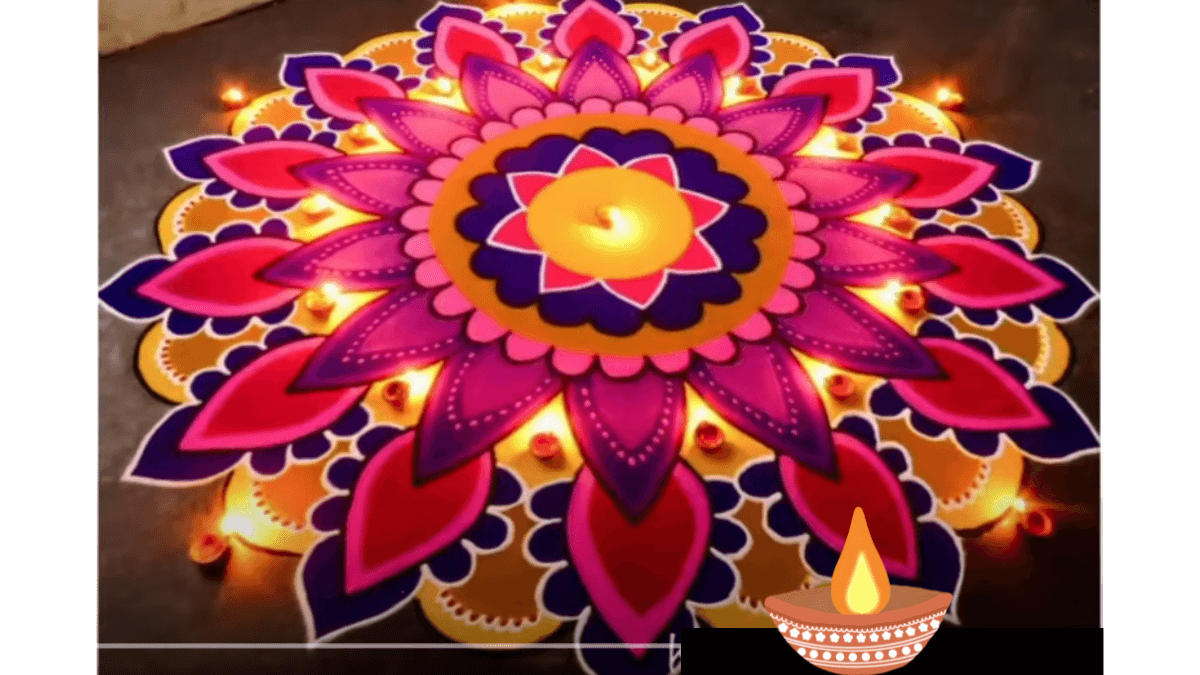
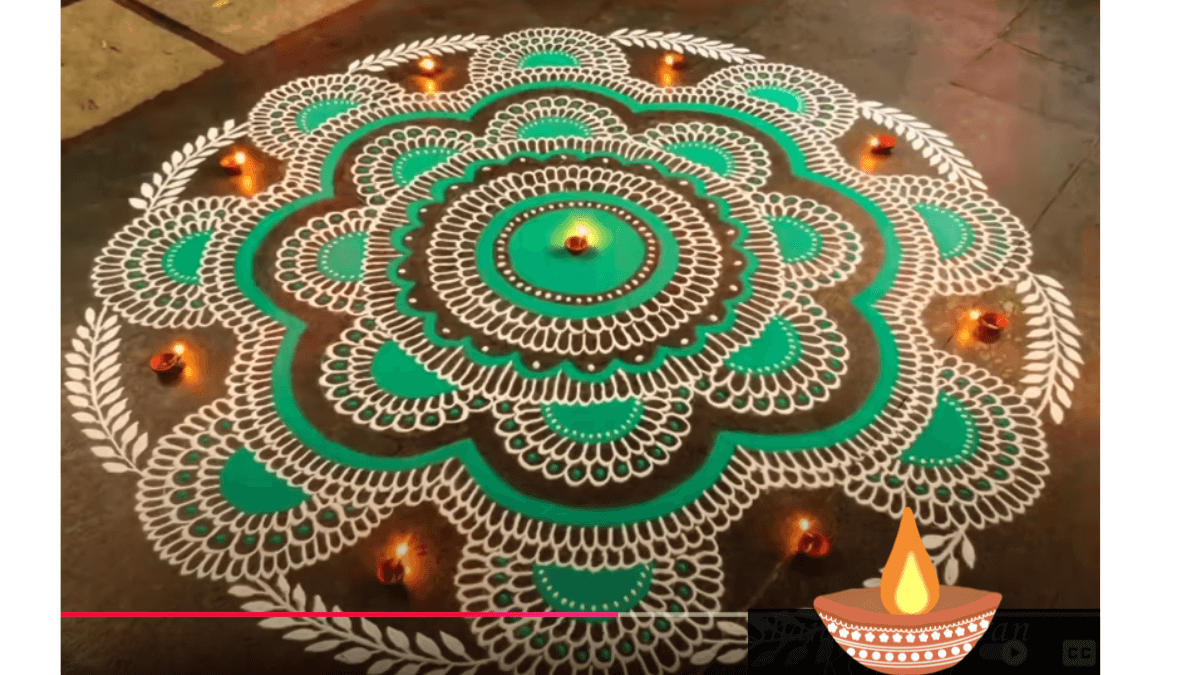
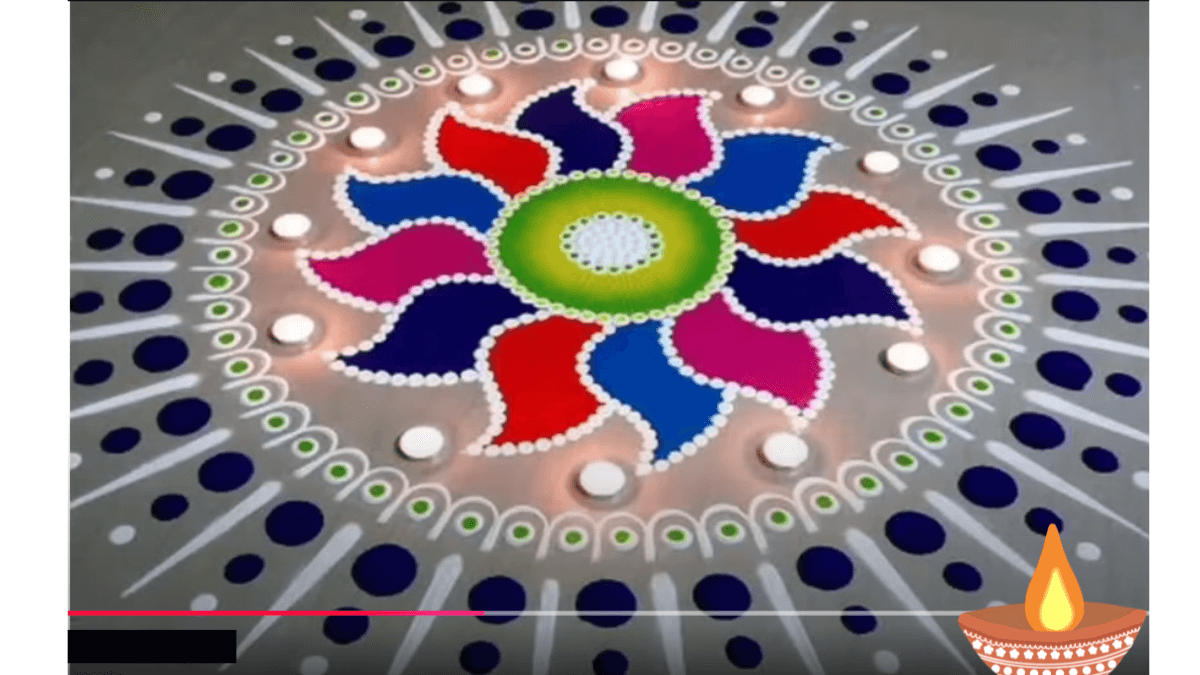
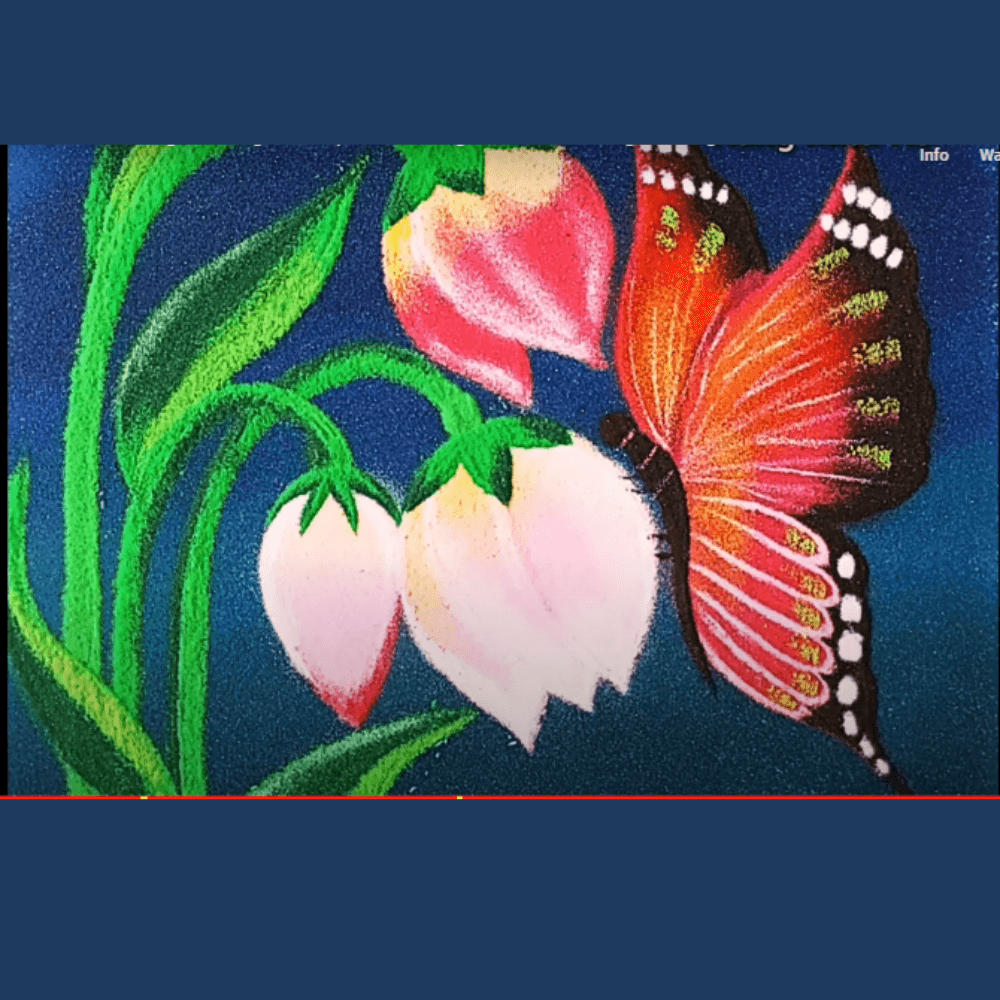
Traditional Rangoli Designs
These Traditional Rangoli Designs feature colors and traditional Indian motifs arranged in a circular formation. Feel free to take a look at the intricate details and the harmonious blend of colors and patterns.
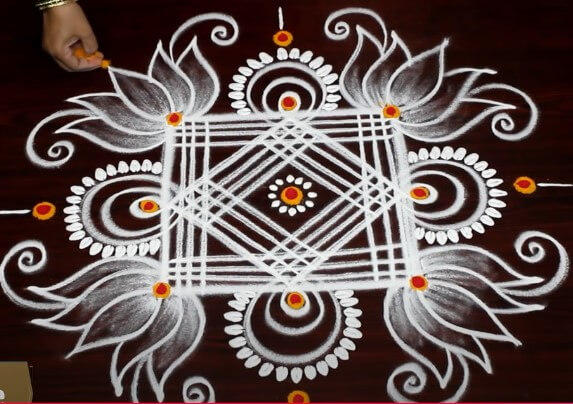

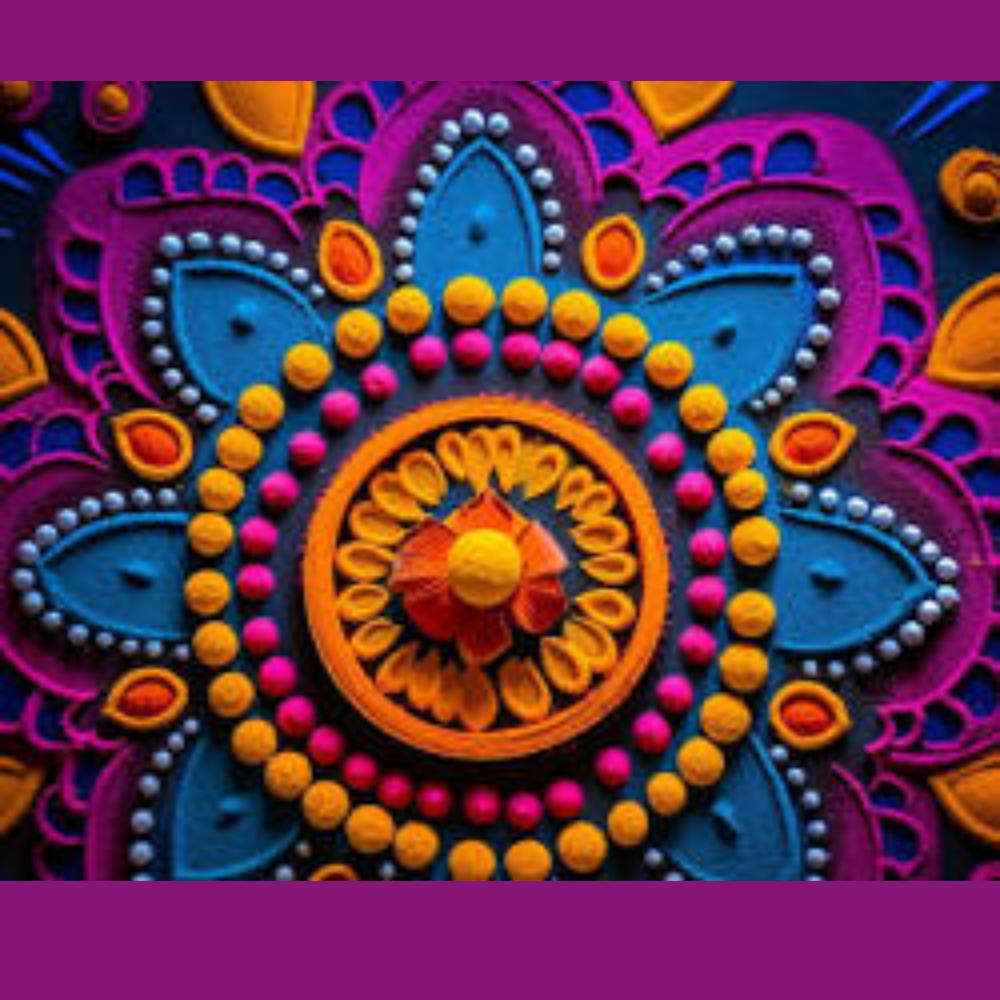
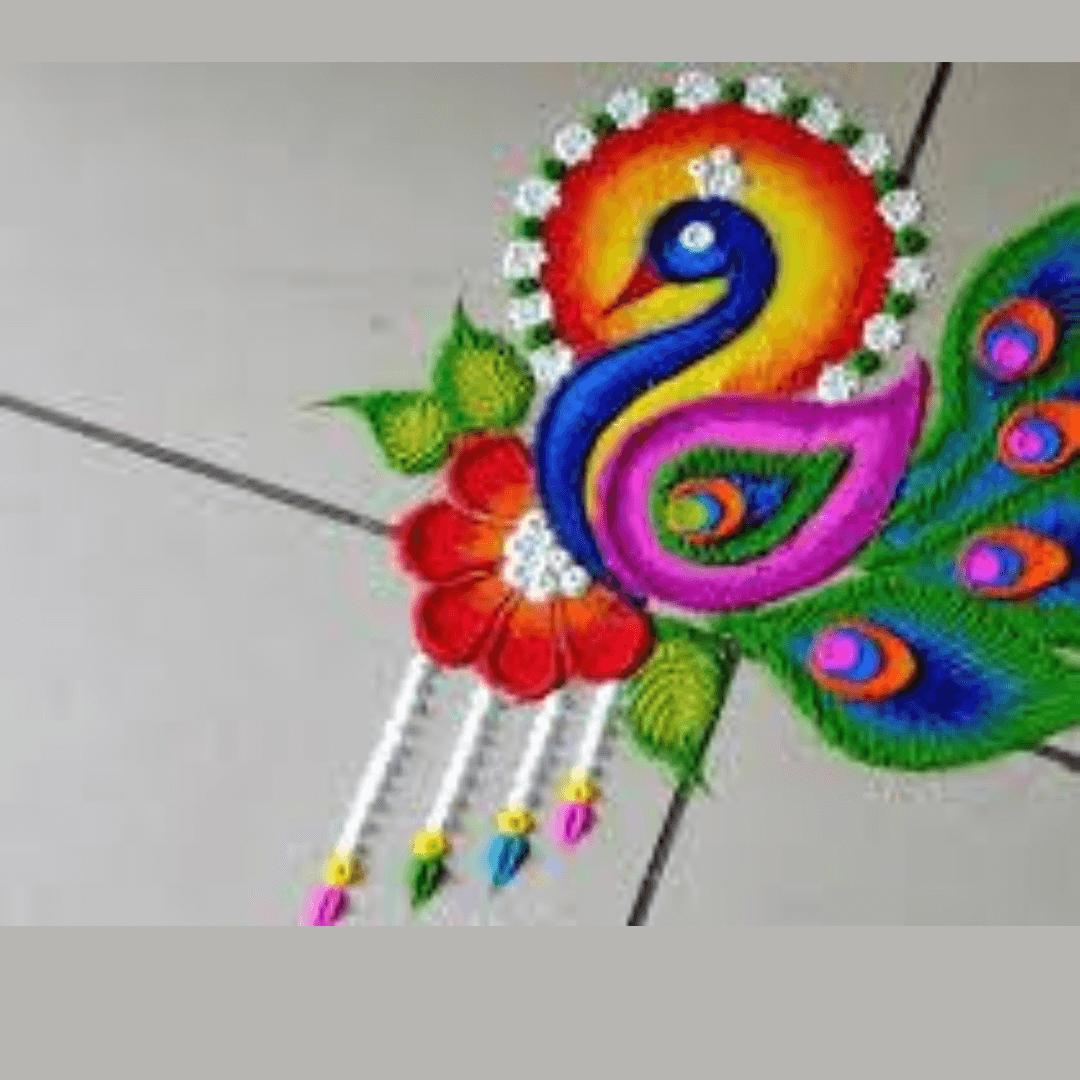
Diwali Easy Rangoli
Here we give diwali easy rangoli design, ideal for beginners. It showcases basic geometric shapes and primary colors, with a symmetrical and balanced appearance.
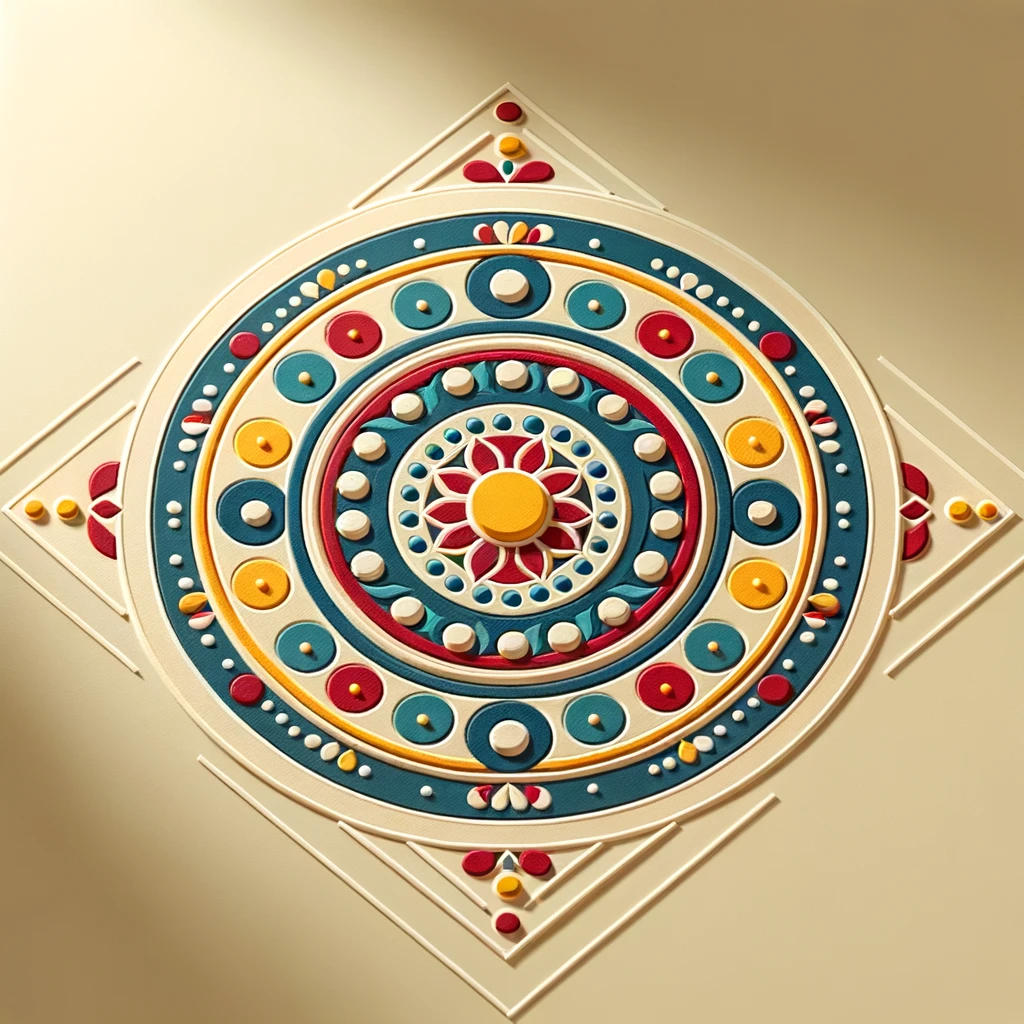
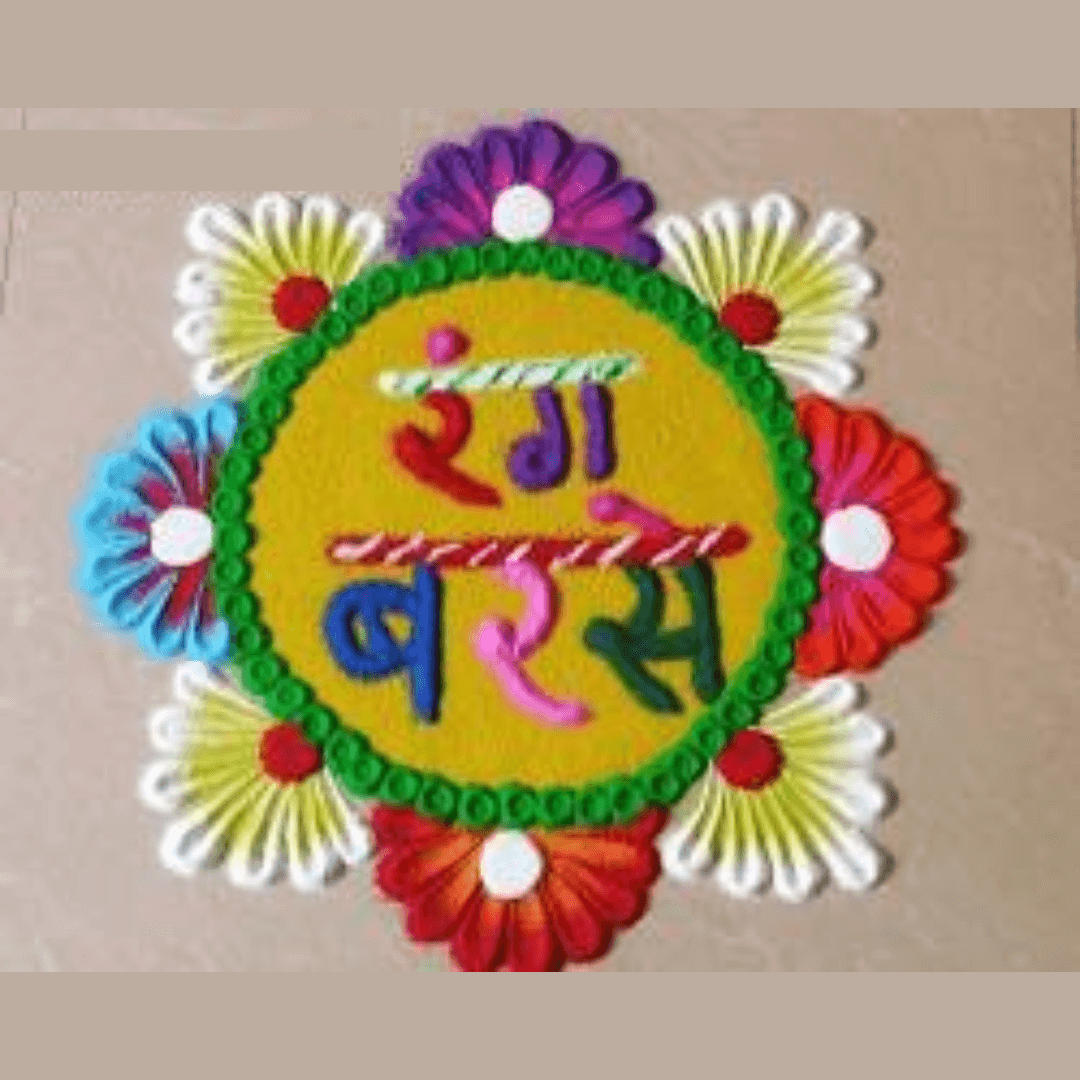
How to Design Rangoli?
How to make Easy Rangoli Designs for Diwali?
You may create a variety of designs using these intriguing items in addition to the paper cones. some information on how to make Rangoli designs step by step with paper cones. Examine the steps indicated below.
Materials required –
- 3 to 4 paper cones, depending on the number of colors in your Rangoli.
- Different sizes of round box caps.
- Powder color.
- Bangles
- A pencil, pen, or any other stick-like item.
- Powder in various shades.
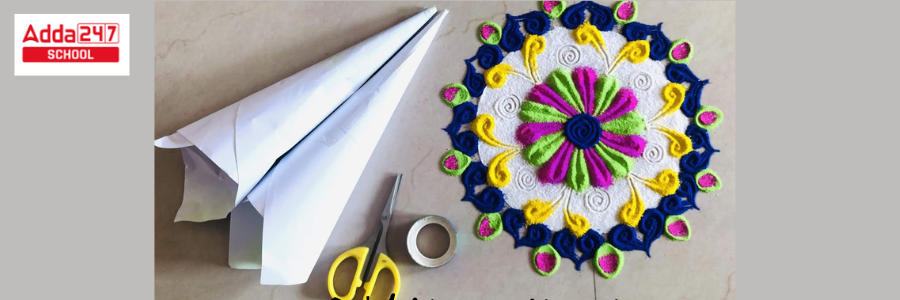
Step-by-step instructions for making rangoli designs using a paper cone –
- Make open-ended cones out of 3-4 paper sheets. Staple the sides together to keep the powder from falling off.
- Fill each cone with a different color rangoli powder.
- Make use of the tile lines on your floor as a guide. Begin by sprinkling rangoli powder in little forms such as lines, dots, and circles along the floor lines.
- Place the larger box cap in the center and pour rangoli powder all around it to make a circular rangoli pattern.
- Draw little lines coming out of the circle with the pencil or stick in a consistent pattern.
- Use various sizes of caps and bracelets as stencils and sketch along them. Use your creative abilities to create different forms and give different colors to each.
12 Types of Types Rangoli pdf
Different Types of Rangoli Design for Diwali with description are as follows. You can download the designs in pdf format also.
| PDF Link |
| Diwali Rangoli Designs 2024 PDF by Adda247 |
Beautiful Rangoli Designs For Diwali
Some of the most Beautiful Rangoli Designs for Diwali are given below:
Rangoli Design for Diwali using geometric shapes
Making designs with squares, triangles, and circles is a terrific way for kids to get started with rangoli-making. You can play around with different colour schemes and combinations to create a geometric artwork that highlights your ingenuity. Students can create these geometric designs known as rangolis and decorate them with diyas or flowers to make them more appealing and bright.
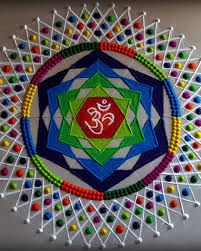
Rangoli Design for Diwali of Lotus
The lotus flower represents purity and enlightenment. A lotus Rangoli can be made by constructing lotus petals with colorful powders or materials. Its brilliant appearance symbolizes Diwali’s spiritual importance.
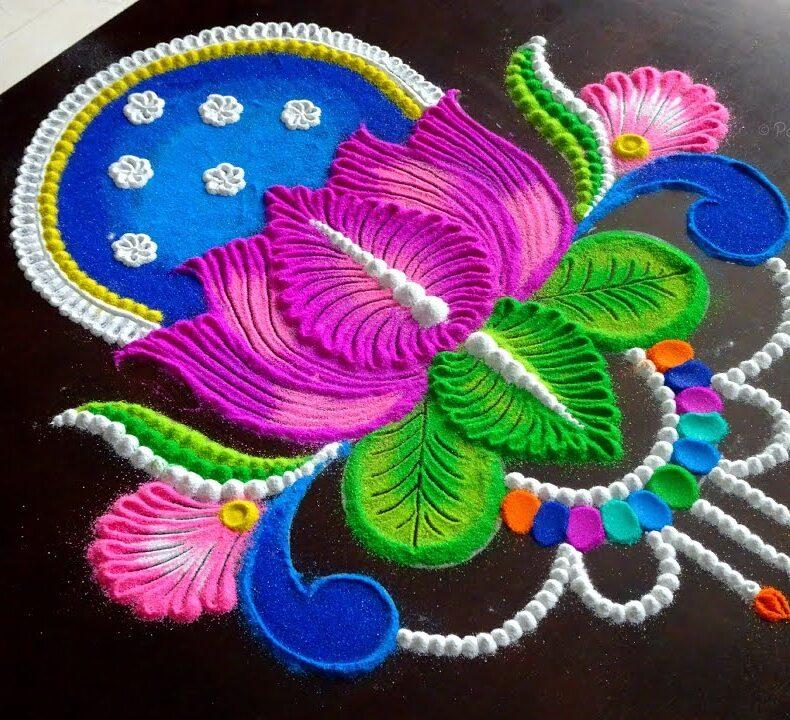
Om Rangoli Design for Diwali
The mystical symbol “Om” represents spiritual peace and harmony. Students can create a Rangoli with spiritual value by designing the symbol “Om” and decorating it with elaborate patterns and embellishments.
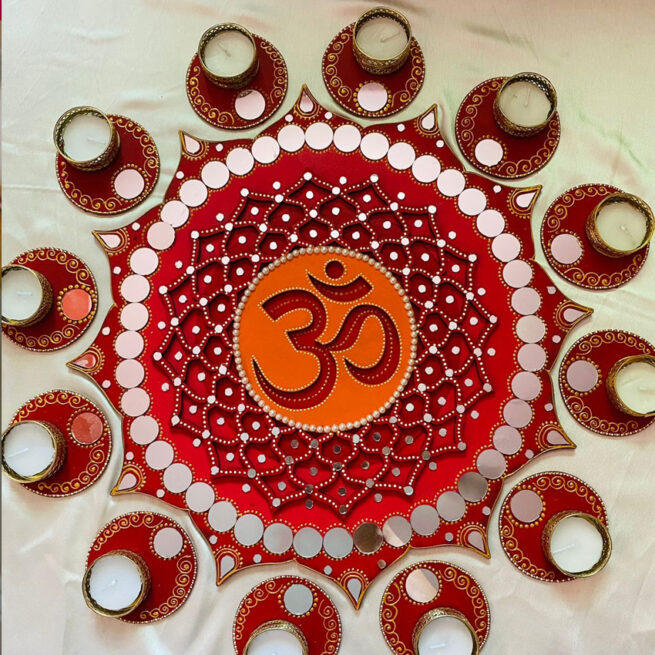
Rangoli Design for Diwali with flowers
Flower designs are another popular rangoli Diwali design, and they are a good choice for novices. Choose flowers such as marigolds or roses and arrange the petals in a variety of shapes and styles. These designs can be constructed using either dried or fresh flowers and colored sand or powder to create vivid flower patterns.
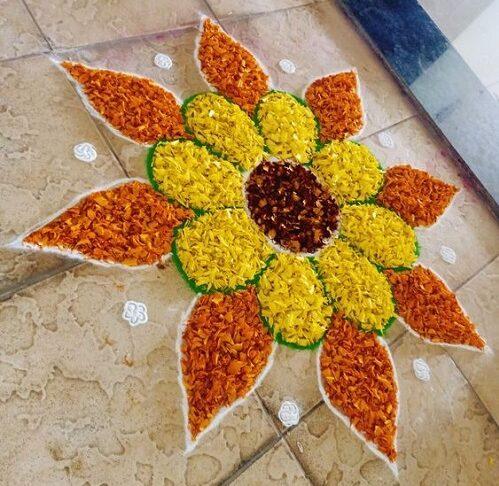
Rangoli Design for Diwali with a Peacock Design
Using contemporary techniques, the Peacock Modern Rangoli design is another cutting-edge design. Sharp objects such as cotton swabs, spoons, sticks, and so forth can be used to carve the designs into rangoli. Although such rangoli designs require a lot of time and concentration, they appear stunning when finished.
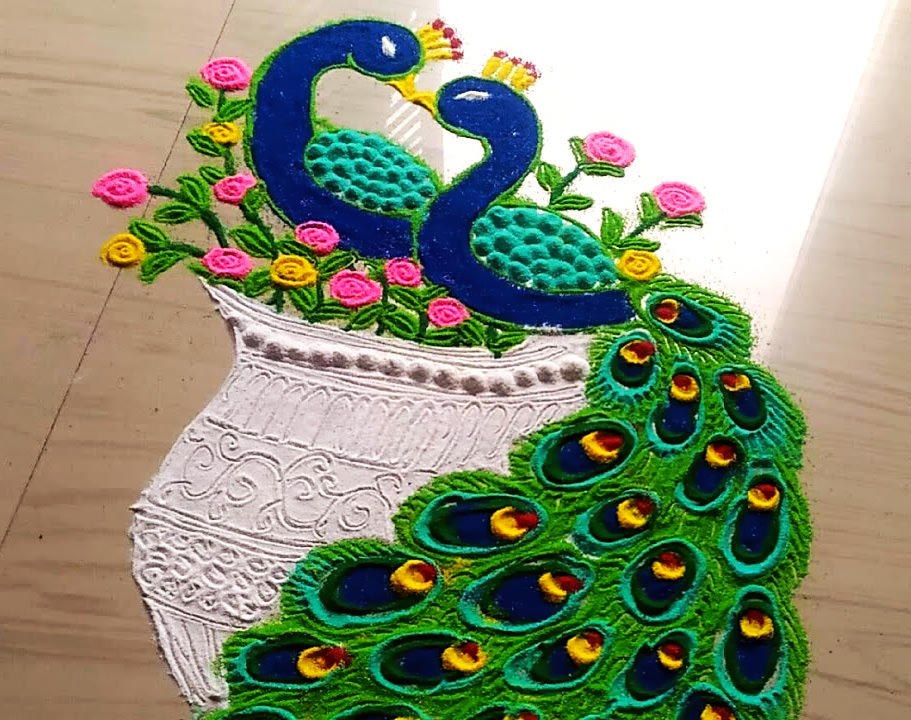
Rangoli Design for Diwali of Diyas (Lamps)
Diyas are an essential aspect of Diwali, representing the triumph of light over darkness. Students can draw or arrange colorful clay lamps (diyas) in various sizes and shapes to create a bright and festive Rangoli that represents the spirit of the holiday in this design.
Rangoli Design for Diwali using Swastika
The Swastika is a traditional representation of happiness and optimism. Students can make this design by constructing a swastika with brilliant colours, turning it into a powerful symbol of good fortune and blessings.
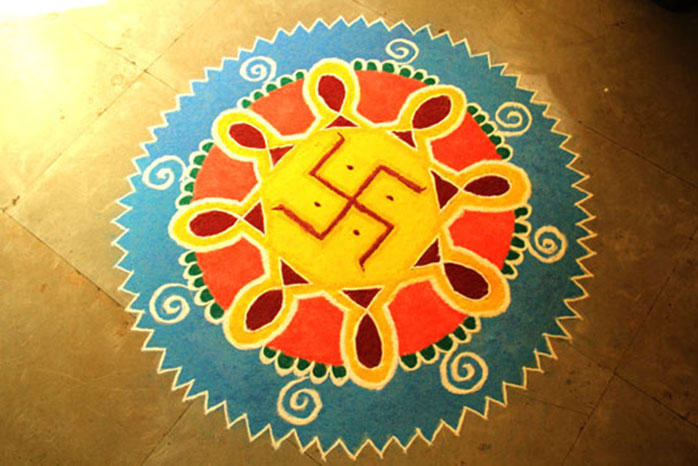
Rangoli Design for Diwali of Sanskar Bharati
It is a simple design circle with various designs inside a vibrant background. You may construct these rangoli designs quickly and effortlessly if you are skilled at free-hand drawing.
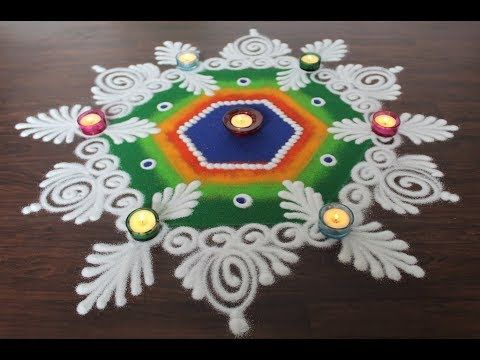
Rangoli Design for Diwali in the Shape of Lord Ganesha
Lord Ganesha is a beloved deity during Diwali, so designing a Rangoli in the form of Lord Ganesha is both creative and meaningful. Students can trace Ganesha’s form and fill it with brilliant colors to honor the remover of barriers and the giver of wisdom.
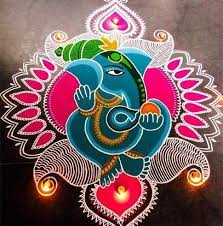
Rangoli Design for Diwali in a Spiral
The spiralling Rangoli is a captivating design that begins in the centre and spirals outwards. Students can make this design as simple or complex as they choose, with a variety of colours and patterns. The spiral represents growth and expansion, making it an appropriate choice.
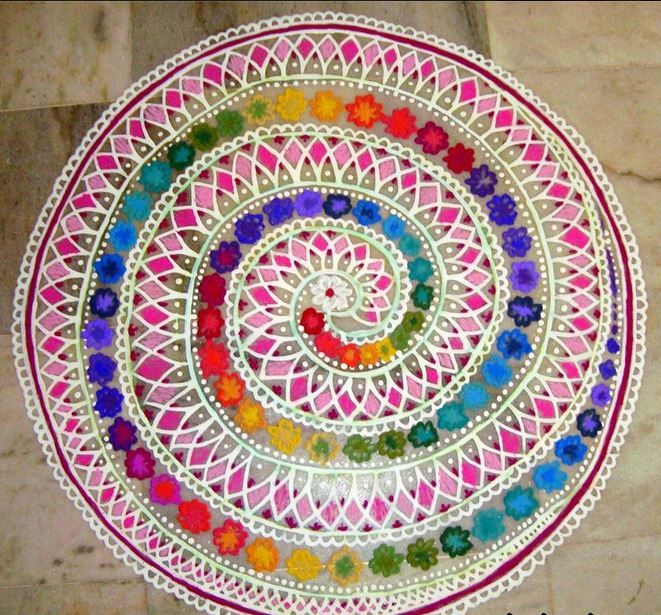
Firework Rangoli Design for Diwali with Diwali Diya
The combination of fireworks and vibrant diyas (lamps) embodies the spirit of Diwali. Students can create a colourful pattern out of various-sized diyas and lights to represent the Festival of Lights and the cheerful celebration.
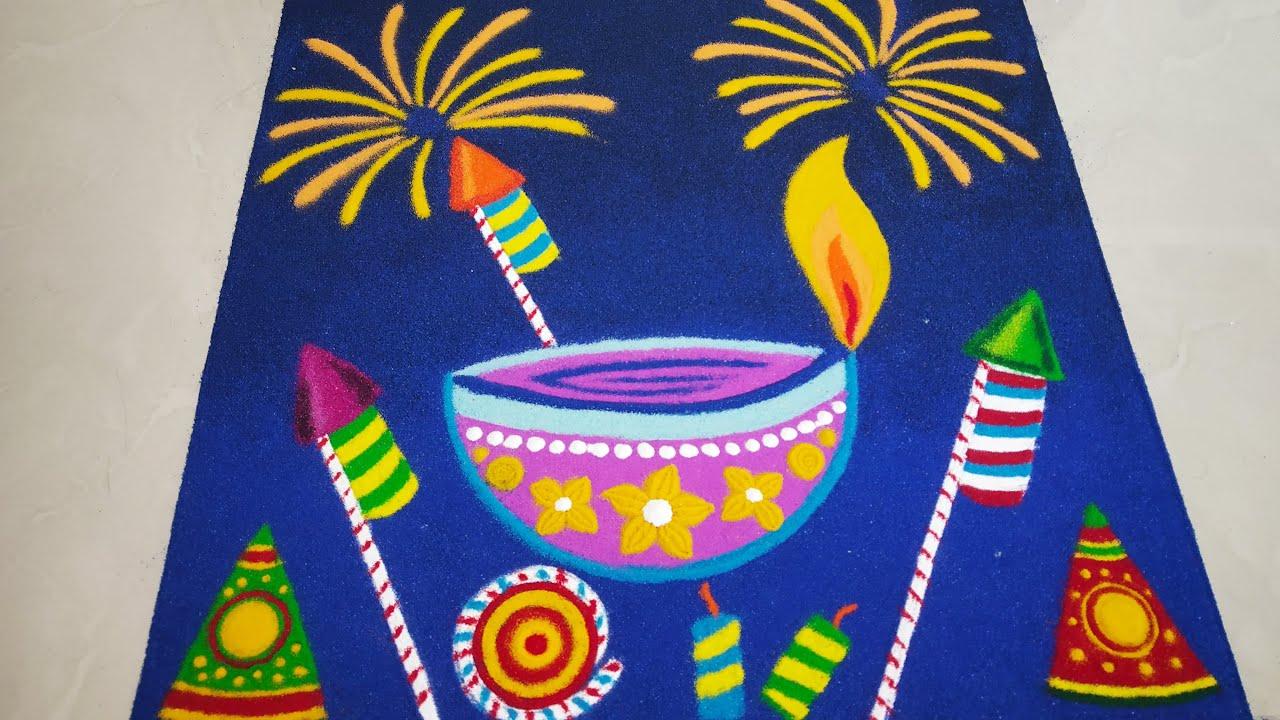
A Message-Based Rangoli Design for Diwali
The Rangoli pattern, which comes with profound messages, is one of the visuals that has gained popularity in recent years. A vivid rangoli can be made to promote the message of protecting the environment. You can also include social messages in your rangoli, such as “Save Water”, and so on.
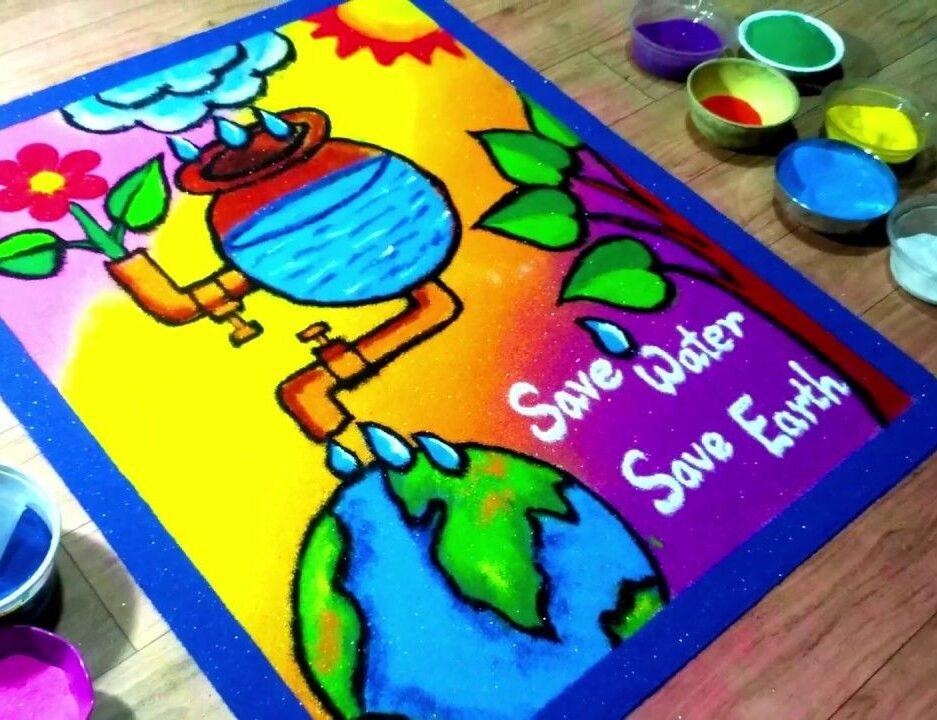
Unique Rangoli Designs for Diwali of Different States
Rangoli patterns fluctuate between different Indian states. The range of patterns and difficulty levels for a unique rangoli design is mostly determined by the maker’s talents and skills.
- Basic Rangoli Design for Diwali – A basic Rangoli is made up of two intersecting triangles. These are drawn to represent Saraswati, the Goddess of Knowledge. The triangles are framed by a twenty-four-petal lotus border. Tiny footprints representing Lakshmi’s footprints are drawn in the four corners of the border.
- Rangoli Design of Bihar – Lakshmi’s footprints are drawn on the doorstep in northern Bihar, with the toes pointing towards the house’s entrance.
- Rangoli Design for Diwali in Andhra Pradesh – A typical Andhra Pradesh Rangoli includes an eight-petal lotus made of a variety of geometric shapes. ‘Ashtadal Kamal’ is the name of this lotus.
- Tamil Nadu’s Rangoli Designs – Tamil Nadu has replaced the eight-petal lotus with an eight-pointed star known as “Hridaya Kalam.” This is a lotus of the heart.
- Rangoli Design in Gujarat – Gujarat is claimed to have nearly a thousand different versions of the lotus that are drawn around Diwali.
Significance of Making Rangoli
Making rangoli on auspicious occasions such as Diwali is considered fortunate in Indian culture. On Diwali, Rangoli represents greeting Goddess Lakshmi.
- Rangoli is often surrounded by a lotus design to welcome Goddess Lakshmi.
- Rangoli has long been associated with Indian culture. Creating rangoli on a lucky day is said to bring luck and prosperity to the family.
- Making rangoli at the front door is thought to welcome positive energy and ward off negative energy.
- Diwali is celebrated to commemorate the arrival of the Goddess Lakshmi. Prayers are presented to her to obtain her blessings in the form of wealth. As a result, a Rangoli design is made at the house’s entry to welcome not only visitors but also the Goddess herself.
- Rangoli designs are typically intricate because it is thought that the negativity in our environment becomes entrapped in the complexity of the rangoli layout and stays out of the house.
- Rangoli designs typically use colored chalk, rice flour, and crushed limestone. Rangoli is also made from many ingredients such as flour, rice, flowers, and colors. People create various patterns and designs in front of their doors and other areas of their homes.
| Related Posts: | |
| Essay on Diwali in English | Diwali Wishes in Hindi, English |
| Best Diya Decoration Ideas | Why do we celebrate Diwali? |

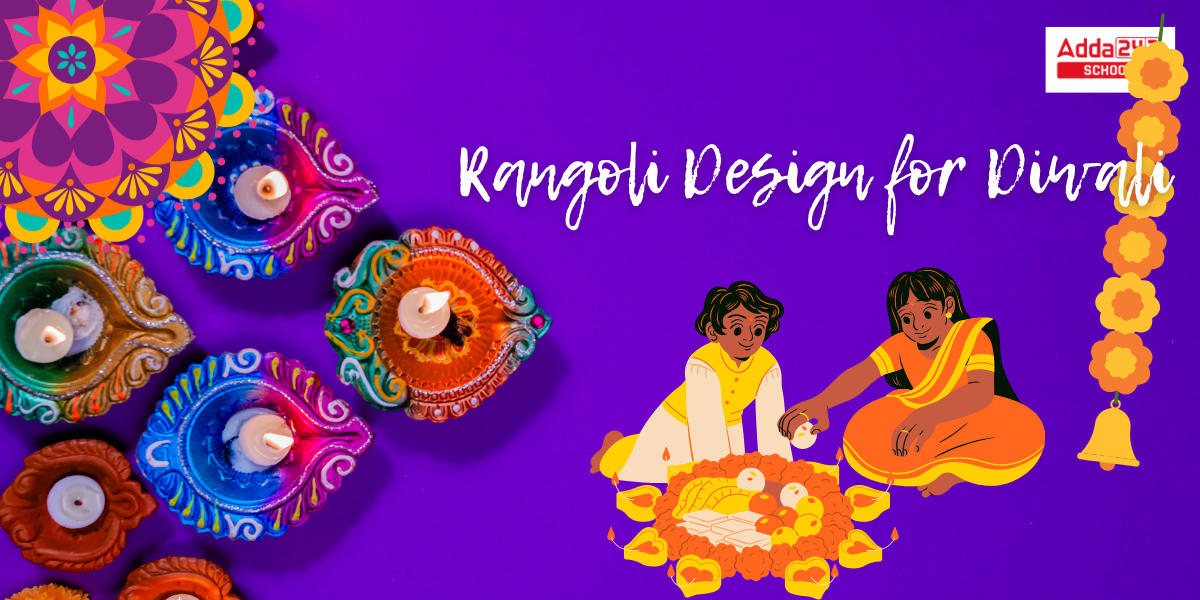

 Children's Day Speech in English, Check ...
Children's Day Speech in English, Check ...
 Top 10 JNV in India 2024, Check Best Nav...
Top 10 JNV in India 2024, Check Best Nav...
 PM Yashasvi Scholarship 2024: Apply Onli...
PM Yashasvi Scholarship 2024: Apply Onli...






























